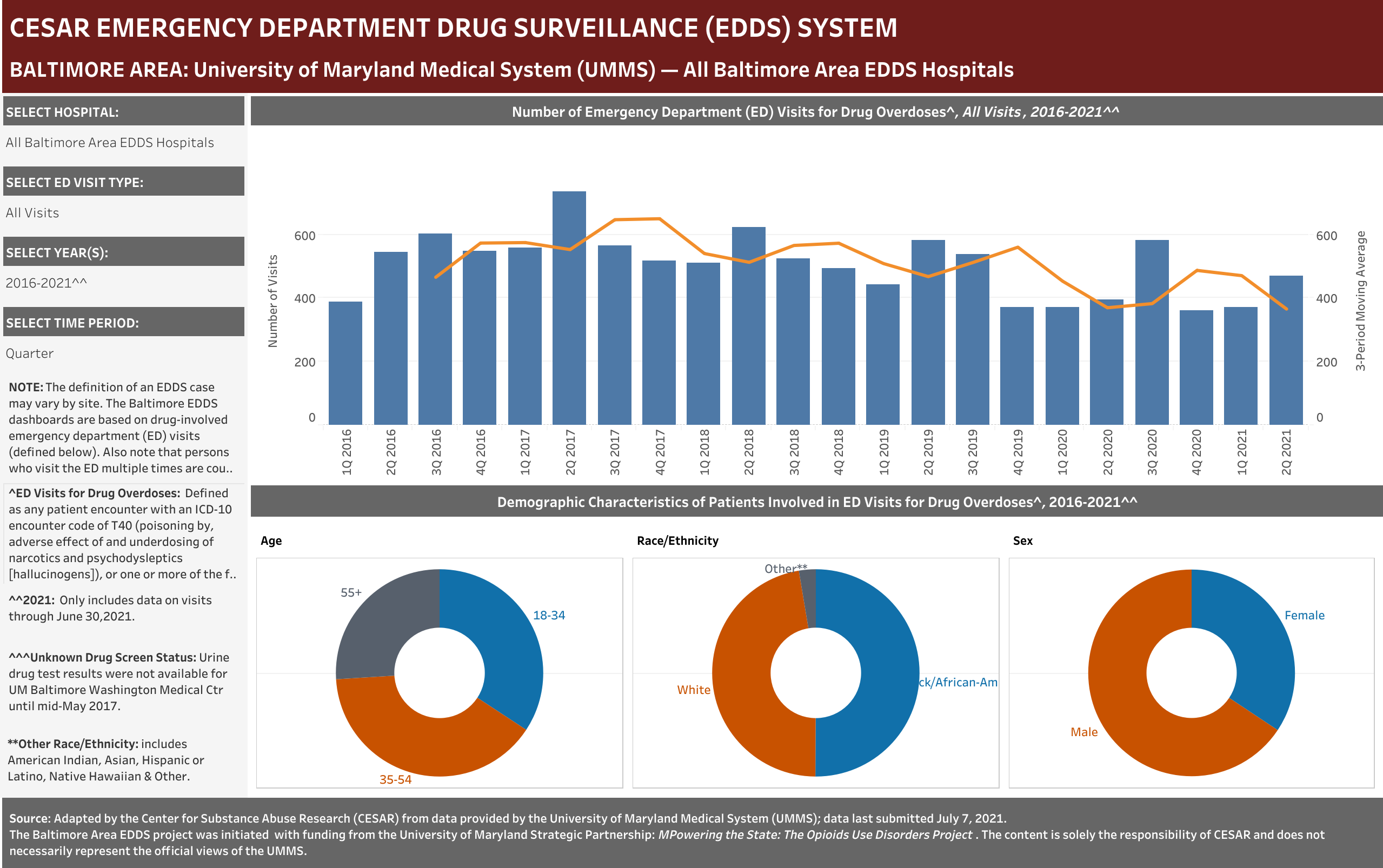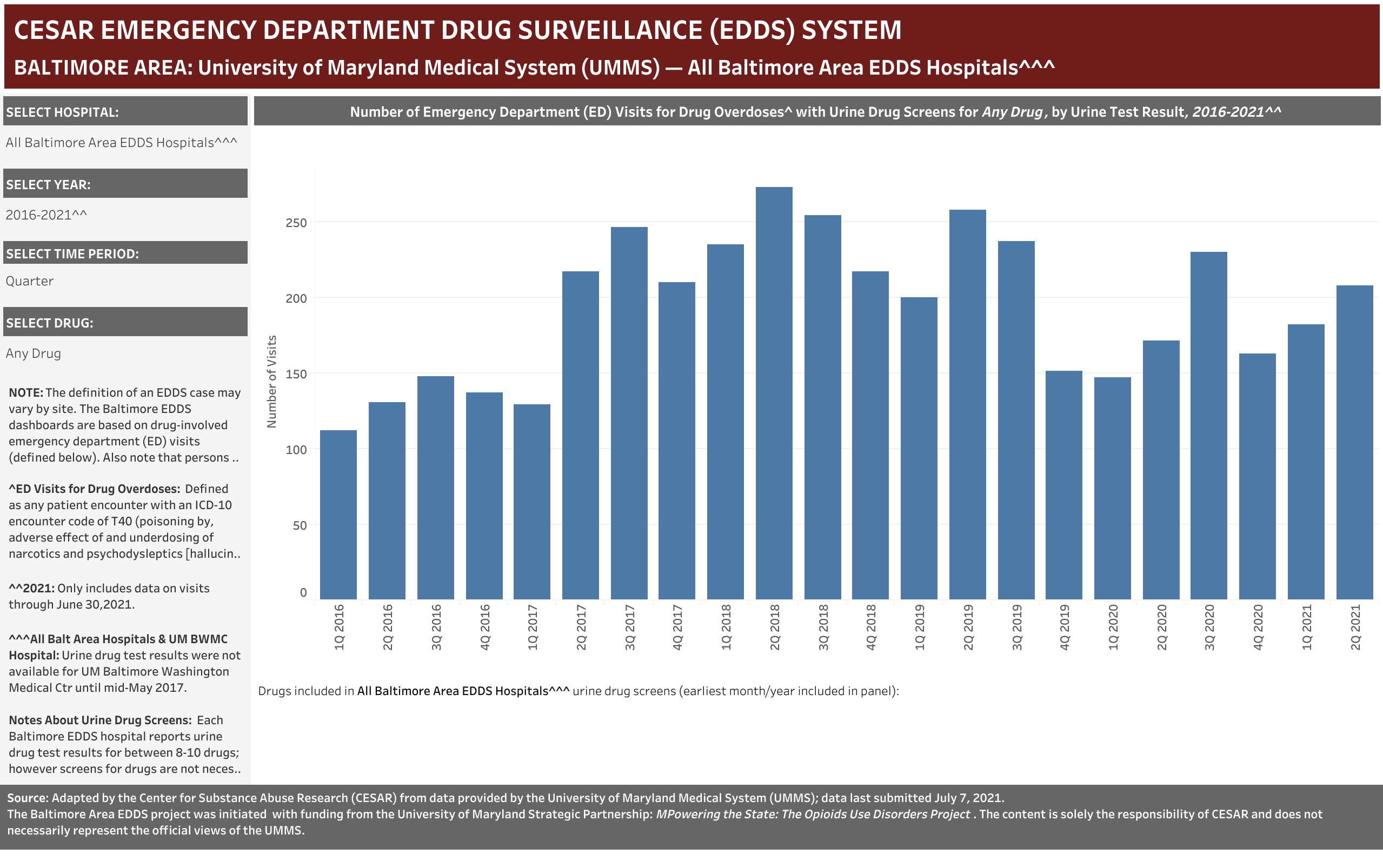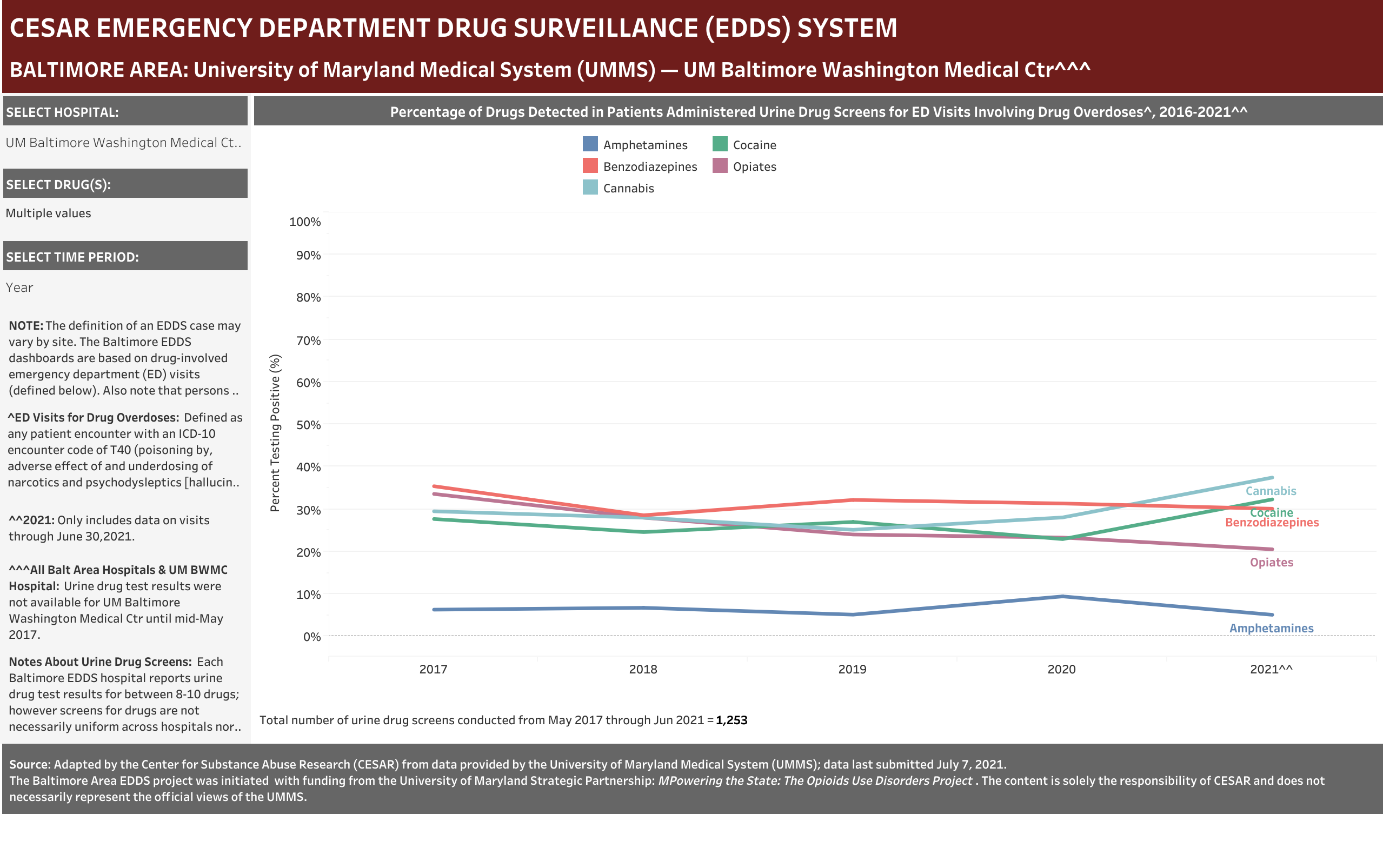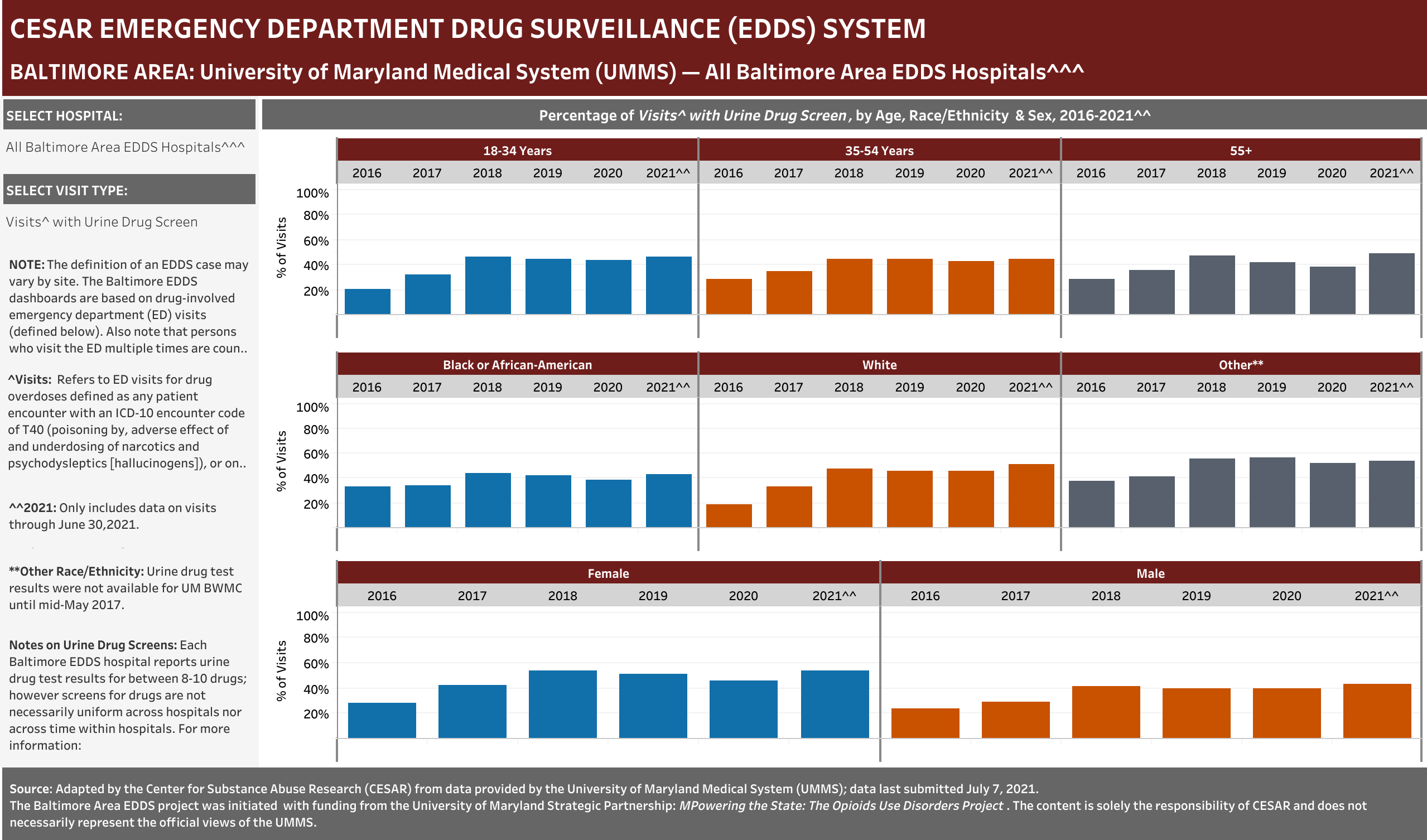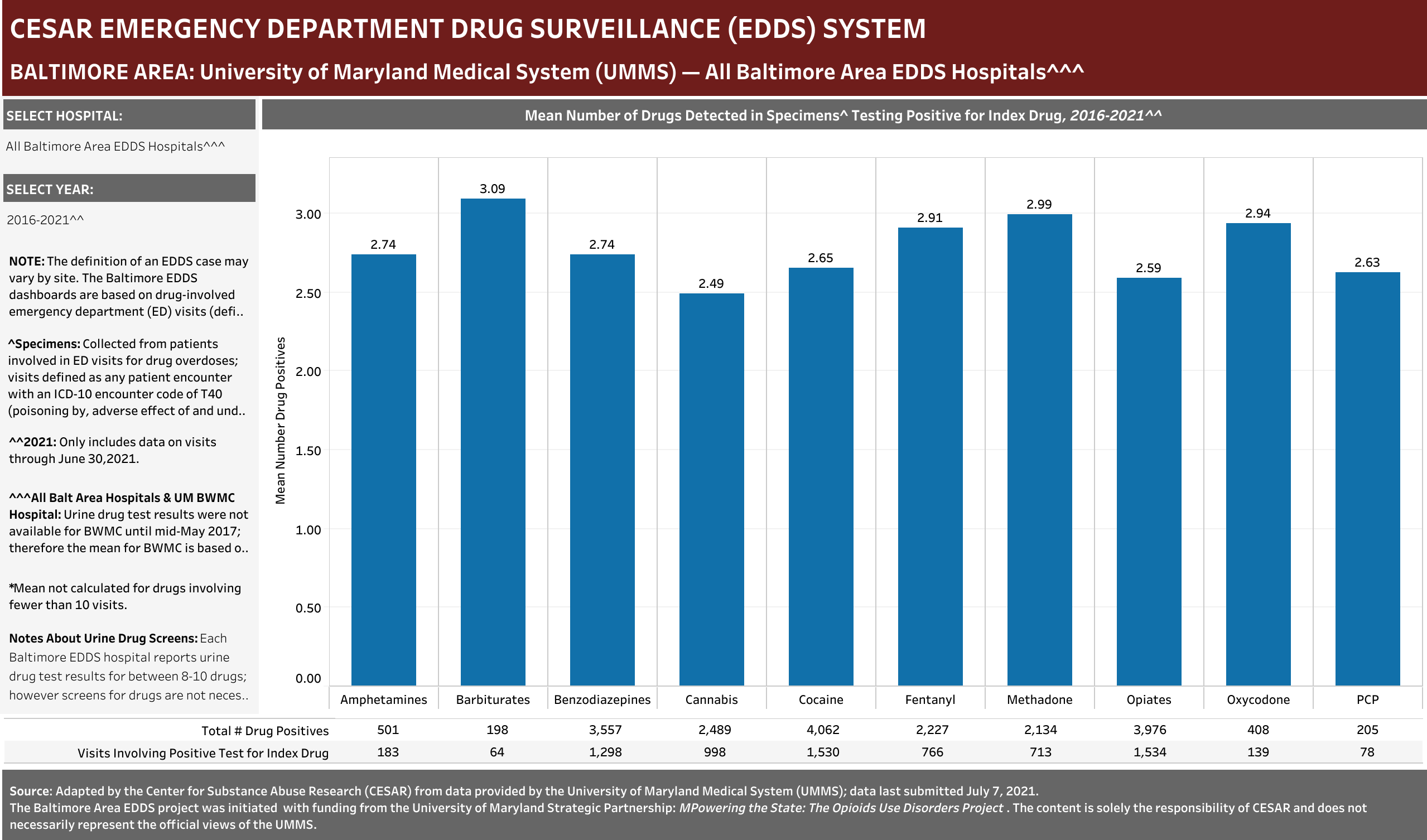Participating Hospitals: University of Maryland Medical System hospitals:
- Baltimore Washington Medical Center (BWMC) | Anne Arundel County
- Medical Center- Midtown Campus (MTC) | Baltimore City
- University of Maryland Medical Center (UMMC) | Baltimore City
- St. Joseph Medical Center (SJMC) | Baltimore County
Hospital data can be reviewed in aggregate, or by individual hospital within each dashboard.
Case Definition: Cases are defined as any adult patient presenting to the main emergency department with an International Classification of Diseases, Tenth Revision (ICD-10) encounter code of T40 (poisoning by, adverse effect of and underdosing of narcotics and psychodysleptics [hallucinogens]), or one or more of the following main complaint reasons: 1) drug overdose; 2) overdose, accidental; 3) overdose, intentional; or 4) HPI-toxidrome, overdose, ingestion. Note that persons who visit the ED multiple times are counted, each time, as a separate visit.
EHR Case Information Provided to EDDS: Arrival date, departure date; ED disposition, patient complaint(s), diagnose(s) and ICD-10-CM diagnostic code(s), age, race/ethnicity, sex, zip code, and, when available, urine drug screen results for 8-10 drugs, ethanol level, and pregnancy test results (as applicable).
- Data Collection Period: See individual dashboards.
- Data Collection Frequency: Quarterly
Notes about Urine Drug Screen Results: Each Baltimore EDDS hospital reports urine drug test results for between 8-10 drugs; however screens for drugs are not necessarily uniform across hospitals nor across time within hospitals. Some hospitals added new drugs to their urine drug screen panel after 2016 and some hospitals may not routinely screen for all drugs. In addition, some patients may be missing results for specific drugs. See Notes About Urine Drug Screen Results for specific information on drugs included in each hospital urine drug screen panel and the number of specimens tested for each drug.
The Baltimore Area EDDS project was initiated with funding from the University of Maryland Strategic Partnership: MPowering the State: The Opioids Use Disorders Project. The content is solely the responsibility of CESAR and does not necessarily represent the official views of the UMMS.
See also:



